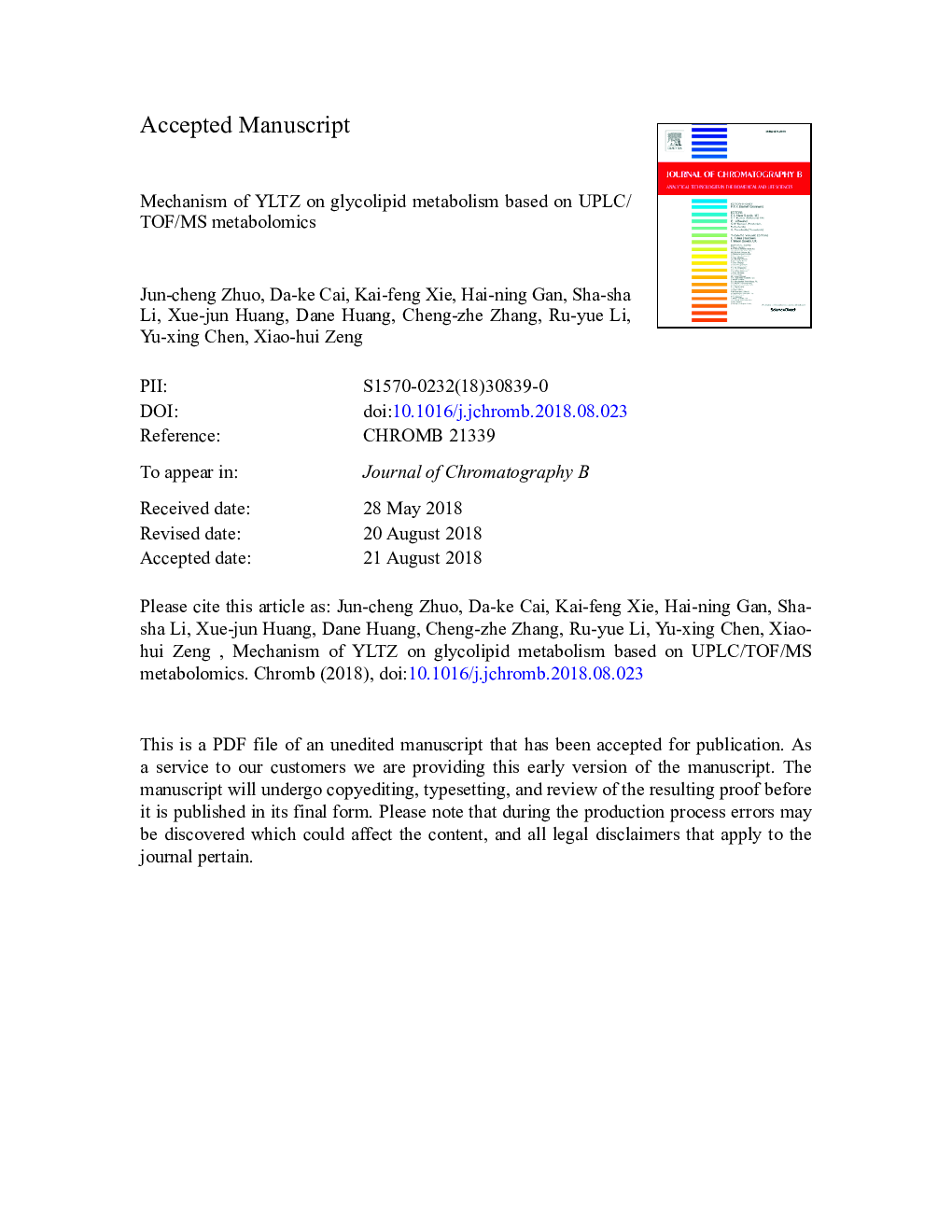| Article ID | Journal | Published Year | Pages | File Type |
|---|---|---|---|---|
| 10147283 | Journal of Chromatography B | 2018 | 30 Pages |
Abstract
Type 2 diabetes mellitus (T2DM) is a metabolic disease characterized by dysfunction of glycolipid metabolism. YLTZ is used to treat hyperlipidemia, yet its hypolipidemic and hypoglycemic mechanism on T2DM are unknown. Thus, UPLC/TOF/MS was applied in this study to identify the potential bio-markers, and deduce the possible metabolic pathways. According to bio-indexes, the increased blood lipid levels, including TC, TG, LDL and FA, and the decreased HDL, the elevated glucose, reduced insulin level and impaired OGTT were observed in diabetic rat model. While YLTZ can decrease the lipid levels and glucose content, as well as increased insulin standards and improve OGTT. After data from UPLC/TOF/MS processed, 17 metabolites were obtained, including phospholipids (LPCs, PCs and PGP (18:1)), beta-oxidation production (HAA, VAG and CNE) and precursors (THA), bile acid (CA, CDCA and IDCA), hydrolysate of TG (MG (22:4)), glycometabolism (G6P), cholesterol-driven synthetics (ADO) and production of arachidonate acid (THETA). As a result, YLTZ was able to reduce LPCs, PCs, PGP (18:1), HAA, VAG, CNE, CA, ADO and THETA, as well as enhance MG (22:4) and G6P. After analyzing results, several metabolic pathways were deduced, which containing, cholesterol synthesis and elimination, FA beta-oxidation, TG hydrolysis, phospholipids synthesis, glycolysis, gluconeogenesis and inflammation. Consequently, YLTZ performed to prohibit the FA beta-oxidation, synthesis of cholesterol and phospholipids, gluconeogenesis and inflammation level, as well as promote TG hydrolysis, glycolysis and blood circulation. Hence, applying metabonomics in TCM research can uncover its pharmacological edges, elucidating comprehensively that YLTZ has capacity of hypolipidemic, hypoglycemic and promoting blood circulation, matching the effect of removing blood stasis, eliminating phlegm and dampness.
Related Topics
Physical Sciences and Engineering
Chemistry
Analytical Chemistry
Authors
Jun-cheng Zhuo, Da-ke Cai, Kai-feng Xie, Hai-ning Gan, Sha-sha Li, Xue-jun Huang, Dane Huang, Cheng-zhe Zhang, Ru-yue Li, Yu-xing Chen, Xiao-hui Zeng,
